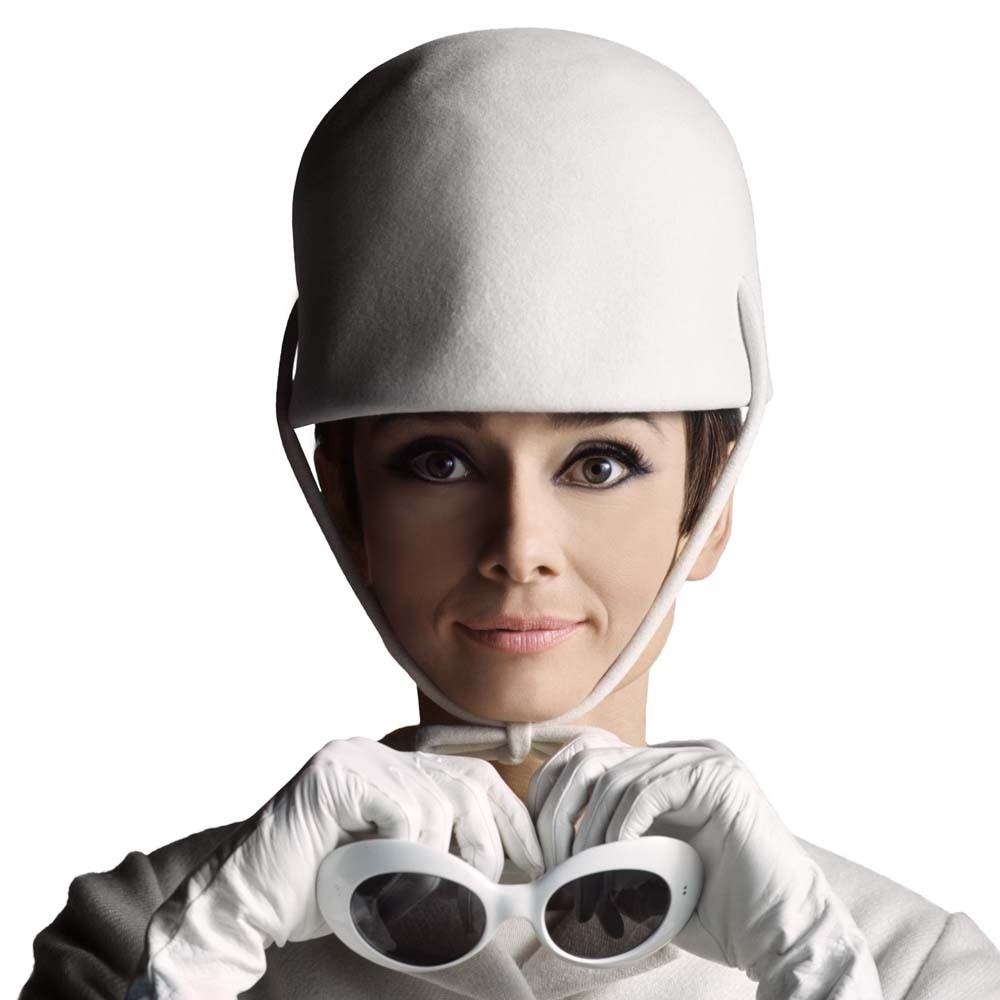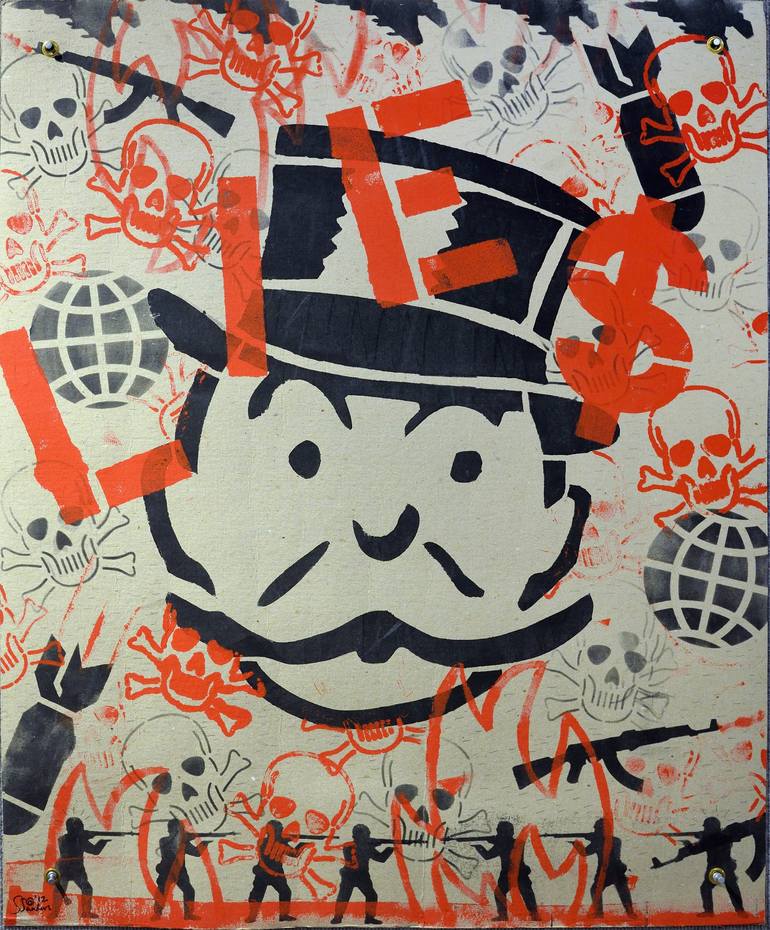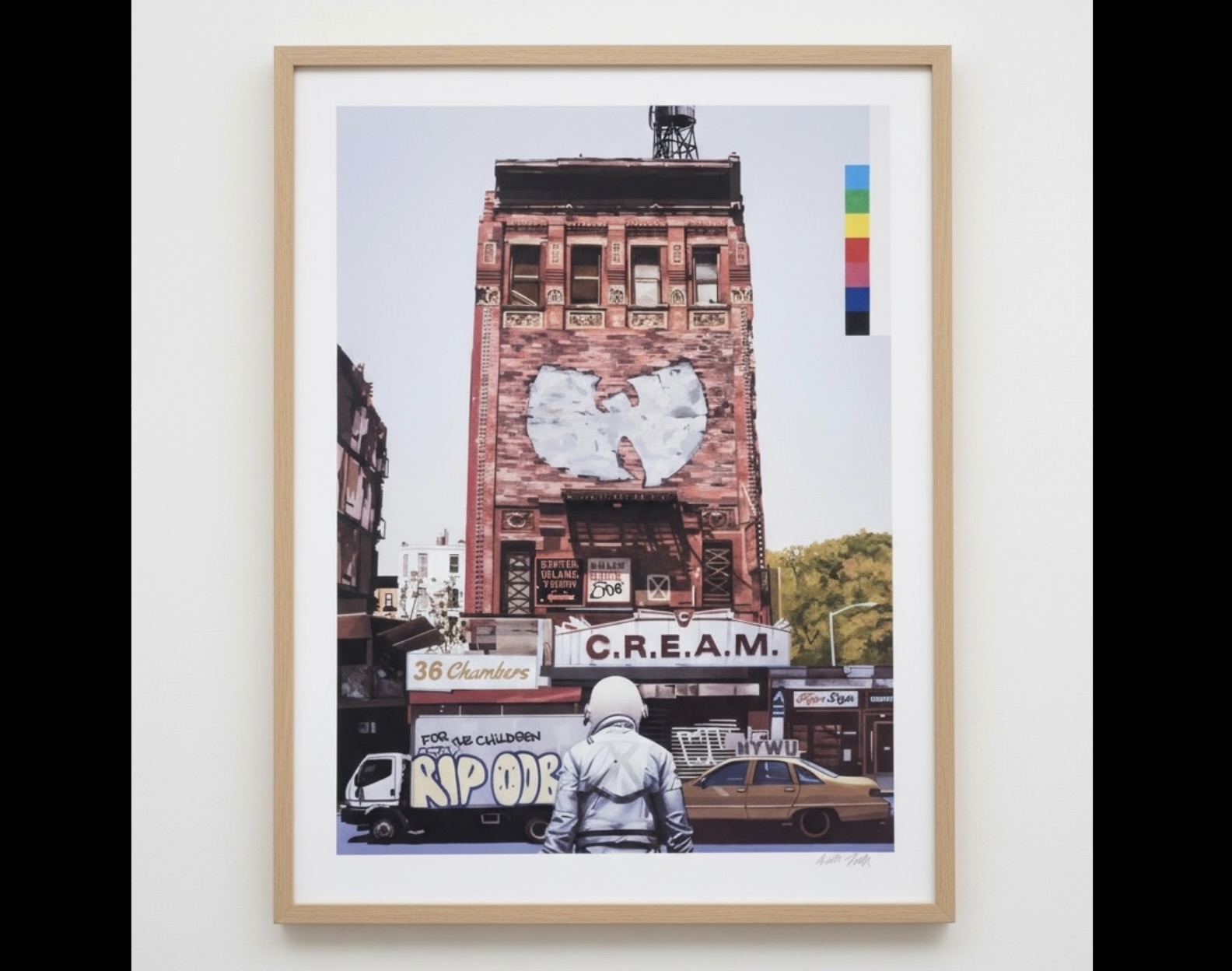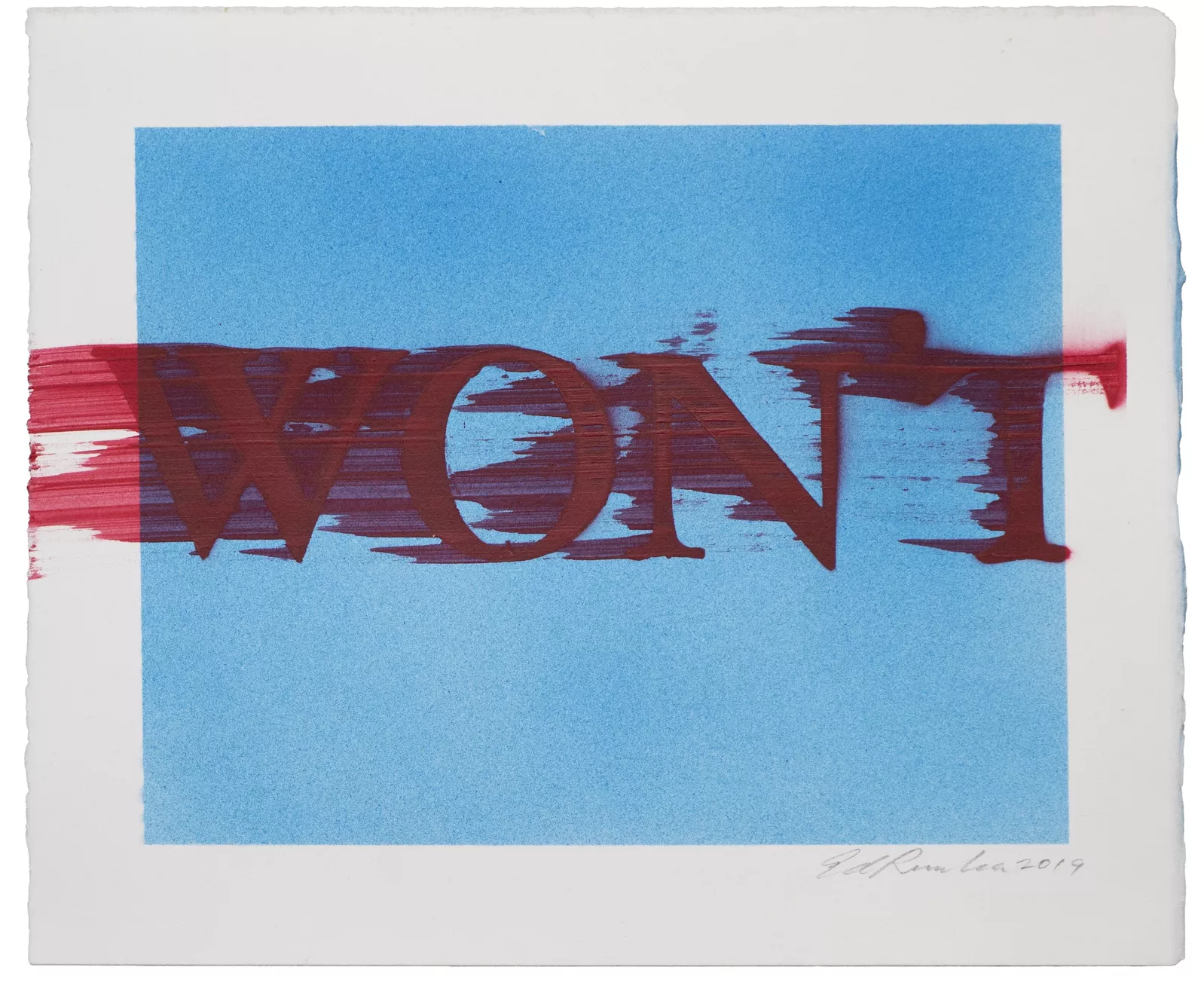the lang
In 1965, at the height of Audrey Hepburn’s luminous career, Douglas Kirkland captured an image that transcended both time and trend — Audrey Hepburn, Glasses and Hat. The portrait, a pigment print on archival paper, signed, numbered, and titled by the artist, distills the quiet intensity and sculptural poise that defined one of cinema’s most enduring icons. It is more than a photograph; it is a dialogue between two sensibilities — the eye of the photographer and the aura of a woman who embodied elegance as a form of self-possession.
The image situates itself in the golden age of fashion photography, when film stars and photographers engaged in an intimate choreography of light and gesture. Hepburn, by 1965, had already ascended to a near-mythical status through Breakfast at Tiffany’s, Charade, and My Fair Lady. Kirkland, then a rising young photographer who had already worked with Marilyn Monroe and Elizabeth Taylor, understood that true glamour wasn’t about performance — it was about restraint. In this photograph, he turns that restraint into poetry.
composition
The image is deceptively minimal. Hepburn, in a wide-brimmed hat and dark glasses, gazes past the viewer, her features framed by shadow and silhouette. The contrast between the soft fall of light across her cheek and the opaque black of her lenses creates an immediate tension — she is both revealed and concealed.
Kirkland’s mastery lies in his ability to reduce the elements of the portrait until only the essential remains. The curve of the hat brim echoes the delicacy of Hepburn’s neck; the glasses, overscaled yet impeccably fitted, form a mask that doubles as a mirror. Everything extraneous — background, color, movement — disappears. What remains is form, proportion, and presence.
Printed as a pigment print on archival paper, the photograph acquires a tactile depth impossible to achieve in its original magazine reproductions. Each tone of black, each shade of gray, has been calibrated by Kirkland to preserve the sensual materiality of light itself. In the artist’s own words, “Black and white removes distraction; it leaves only essence.”
audrey as icon, audrey as idea
By 1965, Hepburn had become more than an actress; she was a template of refinement for a generation navigating modernity. Her collaboration with Hubert de Givenchy had redefined what it meant to be chic — not ostentatious, but architectural; not decorative, but precise. In Kirkland’s photograph, these ideas of fashion and femininity converge.
The glasses — large, geometric, reflective — become a metaphor for self-containment. They shield the eyes, often called the window to the soul, turning Hepburn into an object of contemplation and enigma. The hat, meanwhile, recalls the modish minimalism of 1960s couture: bold in outline, but unembellished. Together, these accessories transform the portrait into a study of modern identity — a woman who is both subject and surface, a being of grace and deflection.
Kirkland was attuned to this duality. His lens sought not only beauty but also the machinery behind its construction. In photographing Hepburn, he wasn’t merely documenting a celebrity; he was articulating a philosophy of looking — how we project, desire, and idealize.
photographer
Douglas Kirkland (born 1934, Toronto) built his reputation through an instinctive understanding of narrative photography. His sessions with stars like Monroe, Bardot, and Taylor were never static exercises in posing. They were performances, shaped by atmosphere and trust. His camera, though technically meticulous, was guided by intuition — by a belief that the most indelible moments occurred between gestures.
In Audrey Hepburn, Glasses and Hat, that philosophy is palpable. The image seems to hover on the edge of movement — as if Hepburn has just turned her head or is about to step out of frame. Kirkland captures the instant before motion, when anticipation defines beauty.
This sense of cinematic pause became his signature. Working across editorial and film sets, Kirkland learned to construct lighting like a director, to choreograph emotion through exposure. His portraits carry a narrative residue; one feels that something has just happened, or is about to. In this case, the stillness speaks louder than any performance.
1965: the world in transition
The mid-1960s were years of cultural shift. The studio system was fading, youth culture was on the rise, and photography was increasingly seen as an art form rather than a commercial craft. Kirkland, then in his early thirties, stood at the intersection of these changes. His portraits blended Hollywood polish with the spontaneity of reportage.
Hepburn herself was at a crossroads — balancing her roles in How to Steal a Million and Two for the Road, moving from ingénue to mature artist. This photograph, though formally timeless, bears the imprint of that moment. It captures an Audrey who is self-aware, almost self-protective, yet radiant. Her elegance feels defensive — a shield against the scrutiny of fame.
In retrospect, the image mirrors the transformation of celebrity itself: from distant ideal to self-constructed brand. Kirkland’s framing anticipates the age of editorial stylization, where icons would be defined not by the roles they played, but by the images that defined them.
The editioned pigment print, signed and numbered on the verso, is not merely a collectible but an artifact of photographic artistry. Kirkland’s choice of archival paper and pigment ink ensures both visual depth and permanence, qualities that echo Hepburn’s own endurance in cultural memory.
Collectors and curators value such works not only for their aesthetic but for their provenance — a direct link to the artist’s hand, a tangible proof of authorship in an increasingly digital age. Within galleries like LUMAS or Eden, the print exists as a bridge between cinematic nostalgia and fine-art modernity. It affirms photography’s capacity to function both as document and as sculpture — an object of surface, shadow, and light.
Today, Audrey Hepburn, Glasses and Hat circulates in the same visual lexicon as Richard Avedon’s Dovima with Elephants or Bert Stern’s The Last Sitting: an image that defines not only a person, but an era’s relationship to beauty.
impression
In Douglas Kirkland’s Audrey Hepburn, Glasses and Hat, we encounter not just the photograph of a star, but the architecture of elegance itself. Hepburn’s anonymity behind the glasses paradoxically intensifies her individuality. Kirkland’s restraint — the absence of color, of background, of overt expression — draws our attention to what photography uniquely captures: presence suspended in light.
Nearly six decades later, the image feels as contemporary as ever. Its graphic precision, its controlled glamour, its ambiguity — all resonate with our modern fascination with persona and privacy. It reminds us that the power of an image lies not in what it reveals, but in what it withholds.
As a signed and numbered print, Audrey Hepburn, Glasses and Hat endures as both artifact and meditation. It embodies the essence of 20th-century glamour distilled through 21st-century eyes — a conversation between style and soul, between the photographer who sees and the woman who, in being seen, became timeless.
No comments yet.








